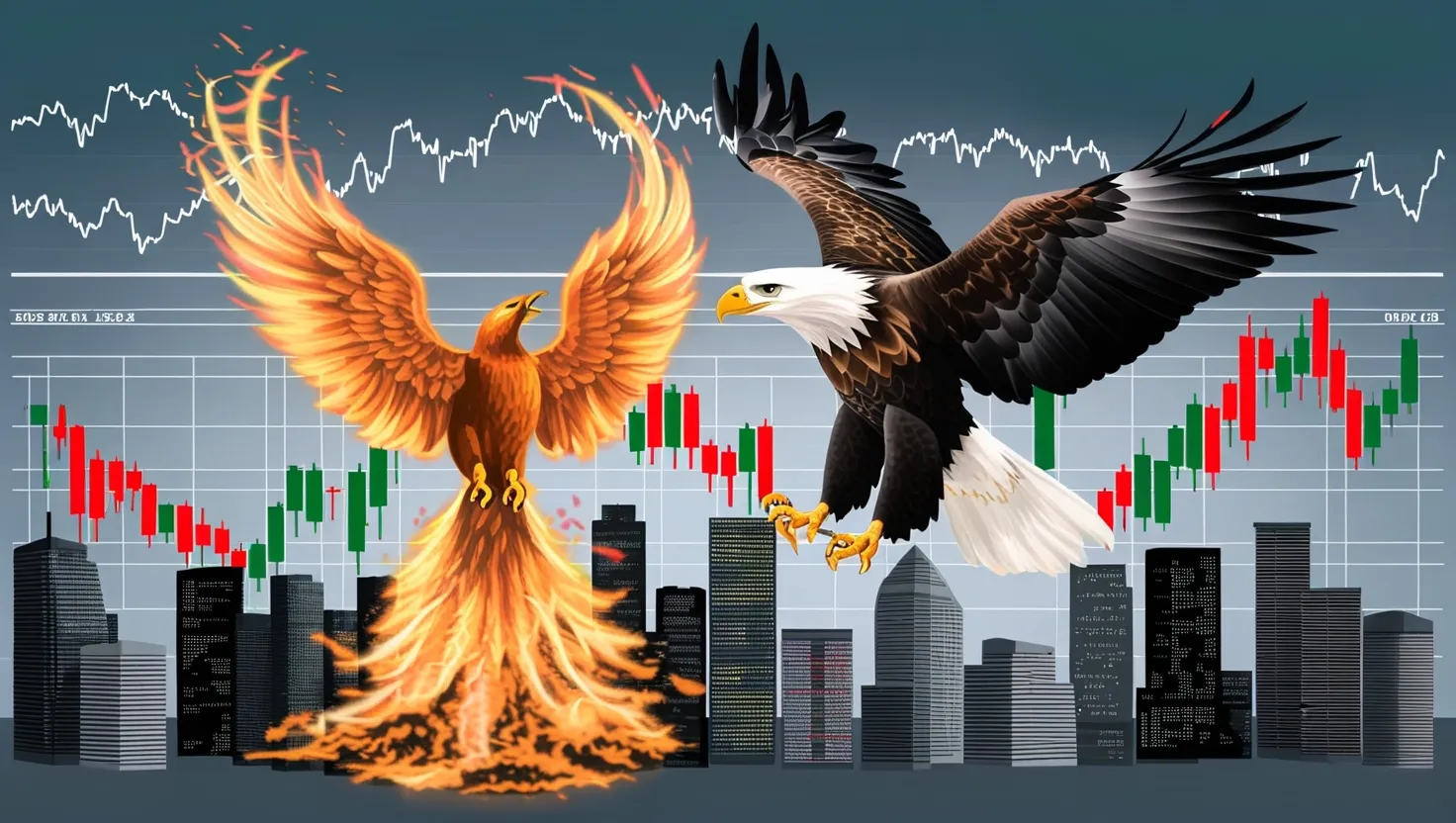When the economy shifts, many investors instinctively brace for stormy days ahead. Yet, for those of us who view turbulence as an invitation instead of a warning, these moments hand us the chance to find true bargains hiding behind all the volatility and noise. Value investing during such periods requires a blend of patience, skepticism, curiosity, and sometimes, a bit of contrarian courage. So how do you spot these genuine opportunities? How can you tell whether a troubled company is a diamond in the rough or just another value trap?
Let’s begin by talking about what really keeps a business alive during tough times: its balance sheet. When I analyze companies, especially during economic uncertainty, I don’t just skim the latest earnings report. I want to see what’s beneath the surface—how much cash is on hand, what the debt maturities look like, and whether management is proactively fortifying rather than just reacting. Companies that take the initiative to reduce debt, push out maturity dates, and build liquidity set themselves up to survive downturns and come out swinging when things stabilize.
This leads me to a simple but crucial question: What happens if credit dries up tomorrow? A sturdy balance sheet might not make headlines, but it often determines who makes it through the storm and who folds. Why do so many investors overlook boring old cash and debt when chasing growth? Because it isn’t glamorous. But in transitions, it’s these overlooked details that separate survivors from casualties.
There’s another layer here—customer concentration. Every downturn changes the game board. Industries consolidate, consumer preferences shift, and some customer segments may vanish or shrink. The smartest companies use these disruptions to diversify their customer bases, not just defend old turf. If you see management investing in reaching new segments while still caring for their established clients, that’s a strong signal. Are you checking for customer base mix in your research, or just scanning revenue growth headlines?
As Andy Grove once said, “Bad companies are destroyed by crisis. Good companies survive them. Great companies are improved by them.” This idea resonates when I analyze operational flexibility. Can a business adjust quickly to a sudden drop—or surge—in demand? Variable cost structures, flexible supply chains, and the ability to redeploy resources are more than operational niceties. They’re essential traits for weathering uncertain times. When you see companies with the discipline to preserve capital in lean months and the drive to scale rapidly when conditions improve, you’re often looking at tomorrow’s leaders.
Let’s shift gears and talk about secular trends. Not all recoveries are created equal. After big economic shifts, some themes accelerate—digital transformation, energy transition, health innovation, and automation, to name a few. Companies embedded in these structural changes aren’t just rebounding; they’re benefitting from a tailwind that often lasts for years. Are you focusing only on “cheap” sectors poised to revert, or are you searching for value where secular forces are creating something new and durable?
It’s worth remembering Warren Buffett’s words: “Price is what you pay. Value is what you get.” The trick is seeing value where others see only spoilage. That brings us to capital allocation. During transitions, many businesses freeze, waiting for clarity. But the best management teams go on offense, investing when assets are discounted, expanding capacity, or making strategic acquisitions while competitors are too shell-shocked to act. Don’t just read what they say—scrutinize every major move they make. Are they buying back stock, hoarding cash, or quietly building a future advantage while everyone else is retrenching?
Market consolidation patterns tell their own story. When capital is scarce and weaker competitors drop out, the landscape can change rapidly. The survivors get more than just a larger share—they may end up with better terms from suppliers, stronger branding, and improved pricing power. Years later, analysts might look back to these periods as the inflection point, when a company transformed its standing in the industry. Are you mapping these shifts, or waiting for them to show up in next year’s numbers?
Behavioral biases play a major role in these moments. Too often, the market mistakes a temporary setback for a fatal flaw. Earnings drop, headlines blare, and investors flee. The disciplined value investor asks: Is this dip a real impairment of future earnings, or just a bump in the road? To answer, I focus on normalized earnings, not just the quarter-to-quarter noise. What would this company look like if industry conditions return to their long-term averages? That’s where the hidden opportunities often reside.
It’s easy to talk about all these techniques in theory, but in practice, it takes a steady hand and a stomach for short-term pain. You’ll inevitably ask yourself: What if I’m wrong? What if this downturn is different? Doubt is part of the process. The real skill is in stacking these techniques—solid balance sheets, diversified customers, operational agility, exposure to long-term growth trends, savvy capital deployment, an eye for consolidation, and a clear view of normalized earnings—until multiple signals align.
Ask yourself: Which companies am I seeing that tick most of these boxes? Which ones am I dismissing too quickly because the headlines are negative? Am I looking for comfort, or for value?
Let me share a story. In 2008, a little-known industrial distributor with a fortress balance sheet and disciplined cost structure started quietly acquiring regional competitors. The market had punished its shares after a rough earnings quarter, assuming the business was as cyclical as its peers. But management kept investing in technology, broadening its customer base, and snapping up distressed assets. A decade later, it dominated its space, and patient investors who saw beyond the chaos were well rewarded.
Or consider companies like those that, during the recent pandemic, invested heavily in digital capabilities and supply chain flexibility. While others were slashing budgets and hunkering down, these firms emerged with broader offerings and stickier customer relationships. They didn’t just bounce back; they altered the competitive landscape.
“Opportunities come infrequently. When it rains gold, put out the bucket, not the thimble.” That’s another Buffett classic. It’s not just about spotting undervalued companies, but being prepared to act decisively when the odds are in your favor. Are you ready to act big when conviction lines up across these multiple dimensions?
We live in times where narratives change by the hour, and algorithms chase momentum in every direction. But value investing, especially during transitions, is about tuning out the noise and digging deeper than the consensus. Sometimes, the best opportunities are in companies that look boring or out of favor, but have all the pieces in place for a quiet transformation.
I challenge you: What industries are quietly consolidating while everyone else is distracted? Which sectors are seeing new long-term trends take root during the chaos? Where are customer bases getting more resilient, not less? Who is spending capital wisely while competitors cling to cash? Which companies have balance sheets so robust that the risk of permanent loss is almost nil?
“Be fearful when others are greedy, and greedy when others are fearful.” It’s a maxim worth remembering, especially when the world seems upside down.
Ultimately, the art of value investing during transitions is about pattern recognition. You’re not just buying at a discount—you’re looking for systems that can survive shocks, adapt to new realities, and build advantages while others hesitate. Every economic shift creates both winners and losers. If you build your toolkit around the seven techniques I’ve shared, you’ll give yourself a much greater chance of finding the next outlier—the business that doesn’t merely survive the transition but is fundamentally reshaped by it in a way that the market can’t yet see.
Ask yourself: the next time panic sweeps through the market, will you have the clarity and courage to look past the noise and see the true value that’s waiting to be found? Or will you be distracted by the same headlines as everyone else?
Each transition is different, but the disciplines remain timeless. If you stay curious, skeptical, and disciplined—and remember that history rewards those who can see beyond the present fog—you’ll have the tools to not only protect capital but see it grow when the dust finally settles.






